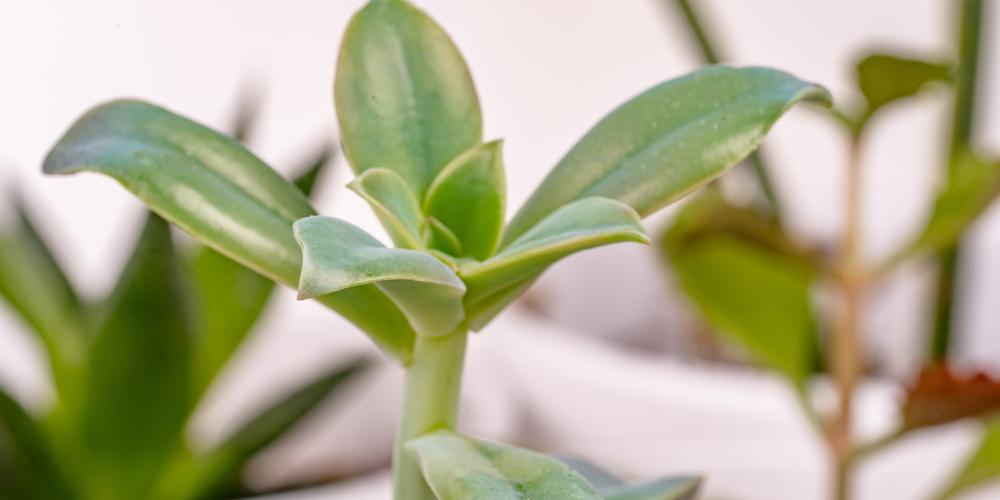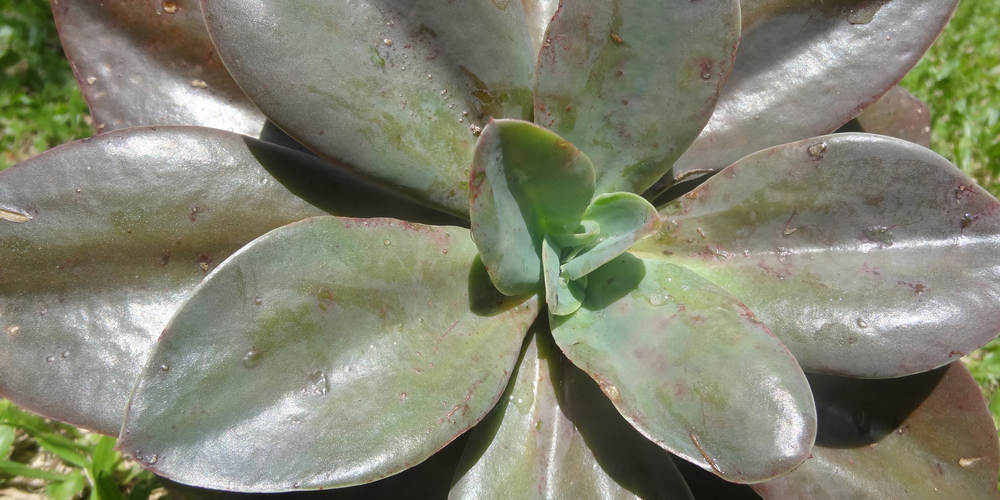Graptoveria Fred Ives is a beautiful succulent characterized by its rosette shape and gorgeous pink, purple, and white colors. If you’re looking for a plant that is both easy to care for and absolutely stunning, then look no further than Graptoveria Fred Ives!
The leaves are a deep green with purple hues, and they’re arranged in a rosette formation. The tips of the leaves are often tinged with red, adding to the plant’s overall beauty.
When mature, the Fred Ives produces yellow flowers that bloom in the summer. The blooms are short-lived, but they’re a welcome addition to the plant’s striking appearance.
Graptoveria Fred Ives are drought tolerant and can tolerate brief periods of neglect, making them perfect for busy growers or those new to succulent care.

| Botanical Name | Graptoveria Fred Ives |
| Common Name | Fred Ives |
| Plant Type | Perennial |
| Flower Color | Yellow |
| Size When Mature | 8-12 inches |
| Bloom Time | Spring to Summer |
| Sun Requirements | Full to Partial Sun |
| USDA Hardiness Zones | 9-11 |
| Soil PH Range | 6.5 – 7.5 |
| Soil Type | Acidic to Neutral, Well-draining |
| Water Needs | Medium |
| Native Area | Mexico |
What You Need to Know About Graptoveria Fred Ives
Graptoveria’ Fred Ives’ is a beautiful succulent with yellow flowers and green leaves. This plant is native to Mexico and Central America and is often used as an ornamental plant in most gardens.
This stunning succulent can reach up to one foot tall and wide when placed in hot, dry climates. In cooler temperatures, it will stay smaller, about six inches tall and wide. The flowers are yellow, borne on long stems, and they bloom from spring to summer.
The leaves are green, fleshy, and up to four inches long. They’re often covered in white spots or streaks. This hardy succulent is relatively easy to care for and can tolerate neglect better than most other plants. It’s an ideal choice for busy growers or those new to succulent care. There are two things you need to be careful about when growing this succulent: never overwater, and prevent frost exposure.
How to Care for Graptoveria Fred Ives
Here’s everything you need to know about growing and caring for a thriving Graptoveria Fred Ives:
Light
When in full sunlight, the leaves of Graptoveria Fred Ives take on a beautiful purple hue. Finding a balance that provides bright light without direct sunlight is essential.
If you live in a hot climate, filtered light is best. Graptoveria Fred Ives will still do well in bright indirect light, but it won’t produce as much of a purple hue.
Morning light is best, especially if you’re located in a sunny and more humid region. During the hottest months of the year, Graptoveria Fred Ives will appreciate being moved to a spot where it can enjoy dappled sunlight or filtered light.
Water and Soil Needs
Graptoveria Fred Ives is a drought-tolerant plant, so it doesn’t need much water. Too much water can be damaging. When watering, remember that your soil should be completely dry before you water again.
The best soil for Fred Ives is a well-draining cactus mix or a light potting mix. You can also get away with soil high in sand, given that it’s well-draining. If you live in an area with hard water, it’s best to use distilled or rainwater to prevent mineral buildup.
During winter, remember to minimize watering frequencies. This is the plant’s dormant period, and it doesn’t need as much water during this time.
Although this succulent isn’t particular on soil quality, it thrives and grows best in nutrient-rich soil, with a pH range from 6.5 to 7.5.
Temperature Requirements
Graptoveria Fred Ives is hardy in USDA zones 9-11. Places with a temperature between 20°F-50°F are ideal for this plant. This succulent can’t tolerate freezing temperatures for long periods of time. If the temperature drops below 20°F, the plant will start to experience damage.
Fertilizer
Use a succulent fertilizer during the growing season, from spring to summer. An all-purpose fertilizer diluted to half strength is also recommended. Remember to apply twice a month during the spring, then reduce it to once a month during the summer.
Common Pests
Although Fred Ives is a tough and drought-tolerant plant, it is susceptible to a few diseases. The most common are root rot, powdery mildew, and scale.
Poor drainage, overwatering, and humid conditions are the perfect breeding ground for root rot. If you notice your plant’s leaves turning yellow, wilting, and falling off, root decomposition has likely begun. The best way to prevent root rot is by ensuring your plant has well-draining soil and by avoiding overwatering.
As for other insects and diseases, aphids, mealybugs, and spider mites are occasional pests. These can be treated with insecticidal soap or neem oil.
Graptoveria Fred Ives Propagation
Offsets or leaf cuttings are one of the two ways Graptoveria Fred Ives can be propagated.
By removing the offset from the main plant and potting it up in a well-draining cactus mix, you’ll be able to propagate from offsets.
To propagate from leaf cuttings, allow a leaf to dry out for a few days until the end is calloused over. Then, insert the leaf about an inch deep into the well-draining cactus mix.
Water lightly until roots begin to form, then water as you would a mature plant.
Related Article: Graptoveria Moonglow

